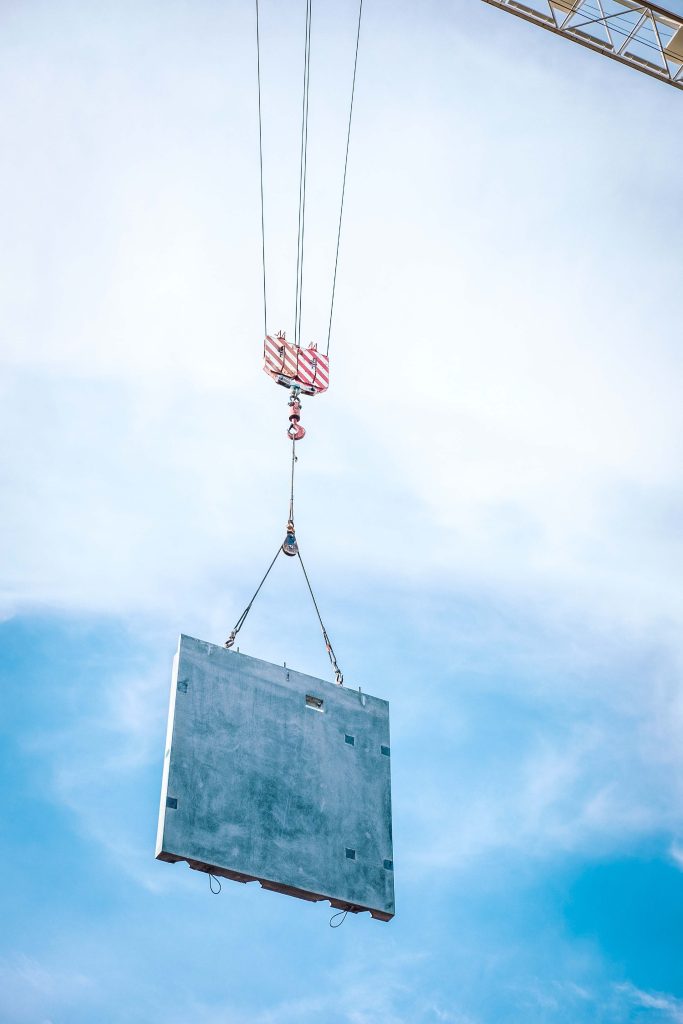If the question is ‘how do we build enough to house our growing populations?’, some espouse modern methods of construction as the answer. Although MMC promises cleaner construction and improved comfort for residents, uptake is still relatively understated. We caught up with Trina Chakravarti to understand what’s holding back change and to learn from her wealth of experience how to overcome the challenges.
As Project Director for the Building Better initiative, Trina Chakravarti works to accelerate the use of prefabricated components in the social housing sector. We’ve got a CityChanger Profile all about it right here.
On her quest, Trina has been facilitating collaboration between housing associations (HAs), local authorities, and manufacturers to advance the use of modern methods of construction (MMC) in building quality social housing fast. She hears from building industry stalwarts that the topic of sustainable construction crops up every decade or so. In fact, MMC have been around since the Second World War. So why is it that traditional construction still dominates the industry?
Many Myriad Challenges
The construction sector is a complex landscape. MMC presents plenty of new challenges that need tailored solutions.
Market Navigation
MMC is “a completely different way of doing business,” Trina admits, which is met with scepticism. The trust invested in the existing model of building and the ‘if it ain’t broke, don’t fix it’ attitude compound a foreboding outlook for housing associations and city authorities regarding a change at scale towards MMC.
Financial Risk
Manufacturers have it equally hard. They’re playing a new game and their credit profiles are still embryonic. Chances of gaining a fiscal foothold are precarious, which further undermines trust in MMC. “Manufacturers in the past have gone under,” Trina recalls, leaving HAs “with this half-unfinished stock”.
Pay Structures
In the past, contractors erected a house or development in situ and housing associations would pay instalments as stages were completed. It took typically between 6 and 12 weeks in total. But MMC homes are quicker to build; if units are made in a warehouse by manufacturers and it only takes 48 hours to put it together on site, builders fear substantial threats to income. As a form of financial guarantee, they often ask for a deposit upfront.
Sceptical Boards
To guarantee builders a fair price, paying per house upfront became a sensible compromise. But authorities deal with public money where expenses are scrutinised. Financial risk is a concern for housing association boards. They are duly worried about paying in advance with nothing to show for it until later – or possibly nothing ever! While this may rarely be the case, it’s a risk that fuels their scepticism.
Naturally, “there is a lot of reticence around whether the industry has matured enough on the supply side” to mitigate the risk involved.
“Some housing associations are waiting to see how the market develops. And honestly, I think that’s fair.”
Trina recognises that some HAs will lead the charge while others “need to understand a little bit more, feel a bit more comfortable before they put their toe in the water”.

Lacklustre Lenders
According to our expert, only five out of around 16 major UK-based public lenders who deal with social housing provides have considered implementing a funding strategy for MMC-built homes. It’s low because of market immaturity: “It still feels too new, too risky, not a big enough issue.”
What about private investors? Although improved quality promises lower repairs and operating costs, “building off-site can still be more expensive than building traditionally when it comes to the upfront capital costs”. As Trina says, this makes it “very difficult for a development director to say to their chief executive or their FD or their procurement team” that this is where they should be putting their assets. They want assurances that it pays off, but long-term hard evidence of high yield return on investment is still found wanting.
A Change in Perception
These problems are largely down to what Trina terms a “perception of risk”.
“Until we have good evidence, until lenders change their perspectives and do have strategies, until housing associations are buying in volume and manufacturers are collaborating so that there’s greater interoperability, some of those perceived risks will continue.”
Luckily, we’re already seeing change. Referring to the first 100 MMC homes Building Better is constructing, Trina tells us: “Finally, the dial is starting to shift, and the costs that we’ve got back on the first framework that we’ve built are pretty much on par now with traditional.” How?
Trina’s work in establishing strong channels for collaboration has been bolstered by a strong partnership with colleagues at Procurement for Housing. Together, they have aggregated supply pipelines, bringing HAs and manufacturers together “to make it easier to access modern methods of construction as a group” through bulk buying.
Throughout the Building Better initiative, which started in 2018, Trina has identified four ideas that aid collaborative partnerships, unblocking the path to MMC uptake.
Reach for Common Ground
In truth, Trina tells us, medium to small housing associations don’t hold much sway individually when it comes to MMC. Collaboration offers greater agency, better control over processes, and a way to take a hold and kickstart change.
HAs have disparate strategies and governance structures. It’s important to find their similarities in a sector preoccupied with differences. This can be tricky, given some associations are tiny, others massive. “I think it’s just a case of finding some of the common ground operationally”, ponders the CityChanger. Overlap often occurs where organisations wish to reduce defects and improve resident satisfaction.
“Regardless of where you sit on that scale, it makes sense to join up with other organisations and do it together.”
Eyes on the Prize
Designers, planners, builders, managers, surveyors… everyone has a job to do, they work hard and are stretched. That has implications:
“All too often, it’s assumed that just because something is a good idea, you’ll be able to get momentum around it. And the reality is it’s just not true.”
Sharing lessens the burden. Collaborative projects, Trina says, must be resolved properly. Make this a goal, pull in the resources to make it happen. Communicate often and openly with stakeholders. It will help you “get over the sometimes thornier issues and roadblocks that will inevitably come up” when “really large and disparate organisations are trying to work together”.
Accept Tension
Conflict is inevitable “whenever you’re trying to get people to agree on things that will work very differently in their businesses”.
Trina offers an example. Housing associations and local authorities have historically guarded their design requirements because they assume they have very different needs from one another. It’s important to accept and acknowledge this may be true and to respect it as the associations know and understand their residents. But that’s not the end of the story.
“We thought, okay, instead of fighting this, why don’t we just get housing associations to give us their employer requirements and compare them?” They found an 88% match; there was so much commonality in the specification that Trina was able to tell them: “You basically have the same design. Let’s focus on a high-level performance specification, and then work with the manufacturers to achieve what we want to do over time.” In other words, it was almost possible to develop one-size-fits-all list of minimum requirements.
Make Mechanisms Contractual
Risk as well as reward should be shared. “Try and ensure you’ve got the right contracting environment to support genuine collaboration and the sharing in those risks and rewards.” Establish this early.
The Building Better team learnt this the hard way. An absence of “a separate legal structure right from the beginning means that you end up spending loads more time convincing one member to take liability on behalf of other members”. It slows everything down, wasting time and money and potentially jeopardising the project.
Building Better offers free resources to help with establishing binding risk-sharing agreements. Trina also suggests seeking any (free) legal advice that you can access.
MMC Challenges and Solutions in a Nutshell
Modern methods of construction are gaining momentum, but the large organisations that can most benefit from the practice are still somewhat hesitant. They want proof of long-term security, better investment, and more support navigating the market. Without it, the move away from traditional construction remains slow. By sharing responsibility and by working together, housing associations and manufacturers, led by MMC champions like Trina Chakravarti, can put their differences aside to establish a new standard for fast, high-quality builds.
For the full picture of the Building Better project, see our CityChanger article about Trina Chakravarti.


